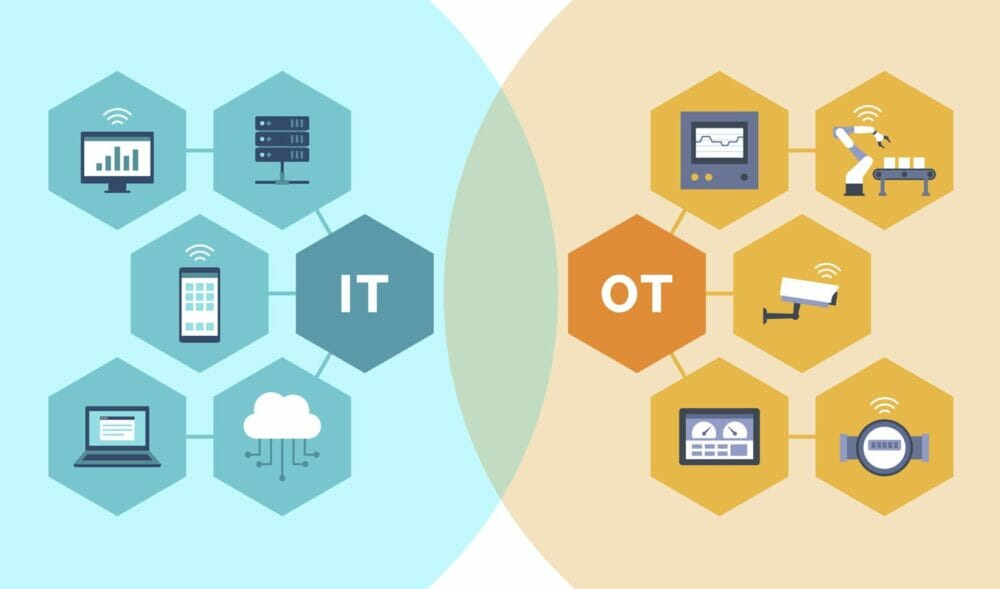By Jason Andersen, Vice President – Strategy and Product Management, Stratus Technologies
The convergence of information technology (IT) and operational technology (OT), as well as the cross-over of responsibility for those technologies for IT and operations professionals have been a long-standing discussion. Digital Transformation initiatives over recent years have accelerated this conversation and catalysed new practices. These new capabilities can bridge some historically significant challenges that have slowed IT/OT convergence in the past.
Chief among these new technologies is Edge Computing and the value it offers to both IT and operations, decreasing costs and enabling the deployment of new capabilities on the plant floor or in the supply chain. On the whole, the value of IT and OT convergence with Edge Computing offers three core benefits to enterprises that need to extract data from the operational edge, gain insight, manage mission critical applications, and reduce IT costs and management.
Better Decision Making through Data
For the most part, the Industrial Internet of Things (IIoT) has been the focus for Digital Transformation projects. This makes sense since the heart of digital transformation is data and analytics. However, one of the challenges of IIoT is the data challenge when many devices become connected. Edge Computing allows data to be collected and processed closer to where it is produced, on the edge of a network, like on a manufacturing floor, or at a remote unstaffed location, like on an oil and gas pipeline. This is helpful since an Edge site may not be connected all the time or maybe the connection speed is not sufficient. Edge computing can define what data gets sent where and when. It also can provide storage for data that may not need to leave the site but still may be of value locally.
Increased Cybersecurity
In the past, the factory floor cared more about physical security than cyber security, simply because there were very few devices connected outside the enterprise. That is changed radically. Increased numbers of connected devices, many of them wireless, means more points of vulnerability for your data. Every point of connection to the Internet increases what security experts call a threat canvas, making it harder to protect confidential data or loss of machine visibility or control.
IT teams have deep levels of experience securing assets from cyber attacks. By running cybersecurity capabilities on edge devices, they protect not only the edge device but other connected devices that may not be cybersecurity capable. The use of Edge Computing as the core of an Edge cybersecurity initiative can help OT understand cyber security risks and better manage equipment to decrease vulnerabilities.
Achieving Zero Downtime with Predictive Maintenance
Many enterprises are adopting technology to implement predictive maintenance approaches. Predictive maintenance uses data like temperature, vibration, and throughput, collected by sensors, then analysed for any red flags or abnormal results. This data is then used to forecast when maintenance should be completed to avoid decreased efficiency or equipment failure. Working together, OT collects the data and IT provides the data analysis to produce forecasts and schedule maintenance at the best time, avoiding unplanned downtime. Edge computing deployed at the machine level can not only provide analytics and alerting as to when predictive maintenance should occur, but it also can run applications that reduce the likelihood of failure or guide those servicing the equipment with added tools to reduce service windows and costs.
Opening the door to innovation
The advances in data center technology over the past decade are now ready to be used outside the data center, providing operations with game changing capabilities. IT’s adoption of cloud technologies provides a template for standardisation and consolidation. This results not only in cost efficiencies but new ways to automate and optimise industrial processes. This will lead to more efficient, flexible and safer ways to deliver products to the market. Edge Computing is a foundational technology that enables these IT capabilities for any manufacturing or energy site.
While Edge Computing is currently driving very data-centric solutions, it has a bigger role in the future of automation. As control and safety functions become more software-defined, Edge computing will be critical in ensuring continuous, safe operations. While this space is emerging, many proofs of concept are underway where machine control is successfully running on Edge Computing devices while also running the applications described above.








